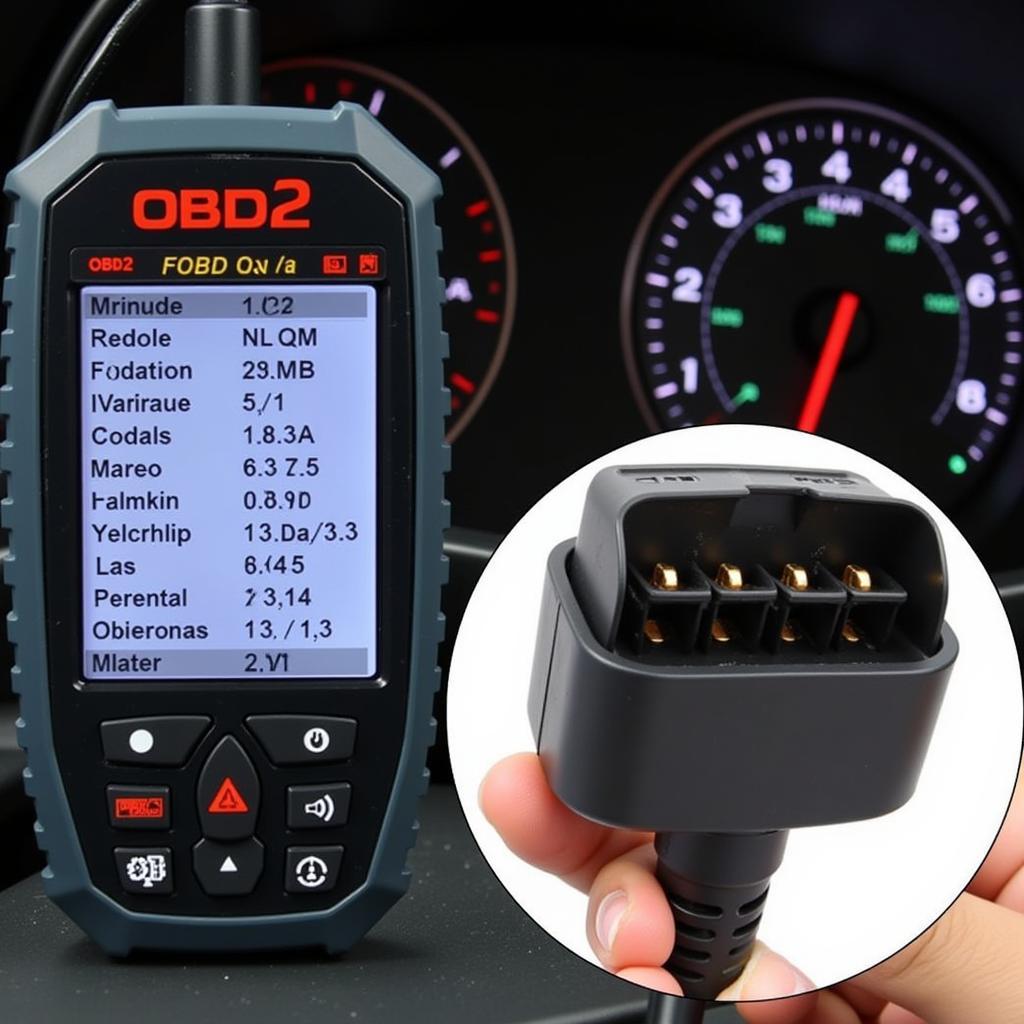Your cart is currently empty!

Understanding OBD2 Scanner Live Data Abbreviations
OBD2 scanners have become essential tools for vehicle diagnostics, providing a wealth of information through live data readings. However, understanding the abbreviations representing various parameters can be a challenge. This comprehensive guide delves into the meaning of common Obd2 Scanner Live Data Abbreviations, empowering you to interpret the data and make informed decisions about your vehicle’s health.
 OBD2 scanner displaying live data on screen
OBD2 scanner displaying live data on screen
What are OBD2 Scanner Live Data Abbreviations?
Live data, in the context of OBD2 scanners, refers to real-time information streamed from your vehicle’s Engine Control Unit (ECU). This data encompasses a wide range of parameters, each identified by unique abbreviations. These abbreviations, often a combination of letters and numbers, represent specific engine functions, sensor readings, and system statuses.
Why is Understanding OBD2 Abbreviations Important?
Deciphering these abbreviations is crucial for several reasons:
-
Accurate Diagnosis: Knowing what each abbreviation signifies allows you to pinpoint potential issues accurately. For example, understanding that “RPM” stands for “Revolutions Per Minute” helps you diagnose engine speed irregularities.
-
Effective Troubleshooting: Live data abbreviations provide valuable insights into your vehicle’s performance. By monitoring these parameters, you can effectively troubleshoot problems, such as identifying a faulty oxygen sensor (O2S) affecting fuel economy.
-
Informed Maintenance: Regularly checking live data can help you stay ahead of potential problems. Monitoring parameters like “ECT” (Engine Coolant Temperature) allows you to address overheating issues before they escalate.
 Mechanic using OBD2 scanner for car diagnosis
Mechanic using OBD2 scanner for car diagnosis
Common OBD2 Scanner Live Data Abbreviations and Their Meanings
While the specific abbreviations displayed may vary depending on the OBD2 scanner and vehicle model, some are universally used. Here’s a breakdown of common ones:
Engine Performance:
- RPM: Revolutions Per Minute (engine speed)
- TPS: Throttle Position Sensor (indicates how far the accelerator pedal is depressed)
- MAP: Manifold Absolute Pressure (measures air pressure in the intake manifold)
- IAT: Intake Air Temperature (measures the temperature of the air entering the engine)
- MAF: Mass Air Flow (measures the amount of air entering the engine)
Fuel System:
- O2S: Oxygen Sensor (measures the oxygen content in the exhaust gases)
- STFT: Short Term Fuel Trim (adjusts fuel delivery based on short-term engine conditions)
- LTFT: Long Term Fuel Trim (adjusts fuel delivery based on long-term engine conditions)
- FUEL PRESS: Fuel Pressure (measures the pressure of the fuel being delivered to the engine)
Emission Control:
- EVAP: Evaporative Emission Control System (monitors and controls fuel vapor emissions)
- EGR: Exhaust Gas Recirculation (reduces NOx emissions by recirculating a portion of exhaust gas back into the engine)
Other Important Abbreviations:
- ECT: Engine Coolant Temperature (monitors engine temperature)
- VSS: Vehicle Speed Sensor (measures vehicle speed)
- MIL: Malfunction Indicator Lamp (commonly known as the “Check Engine” light)
- DTC: Diagnostic Trouble Code (indicates a specific fault detected by the ECU)
Tips for Using OBD2 Scanner Live Data
-
Consult Your Vehicle’s Service Manual: For a complete list of abbreviations specific to your vehicle model, refer to your service manual.
-
Start with the Basics: Familiarize yourself with the most common abbreviations first, then gradually expand your knowledge.
-
Use a Reliable OBD2 Scanner: Invest in a high-quality scanner from a reputable brand to ensure accurate data readings.
-
Combine Live Data with Other Diagnostic Tools: Use live data in conjunction with other diagnostic tools, such as a digital multimeter, for comprehensive troubleshooting.
 Car owner checking live data with OBD2 scanner
Car owner checking live data with OBD2 scanner
Conclusion
Understanding OBD2 scanner live data abbreviations unlocks a wealth of information about your vehicle’s performance and health. By familiarizing yourself with these abbreviations, you empower yourself to diagnose problems accurately, troubleshoot effectively, and make informed decisions regarding your vehicle’s maintenance. Remember to consult your service manual for vehicle-specific abbreviations and invest in a reliable OBD2 scanner for accurate readings.

Leave a Reply